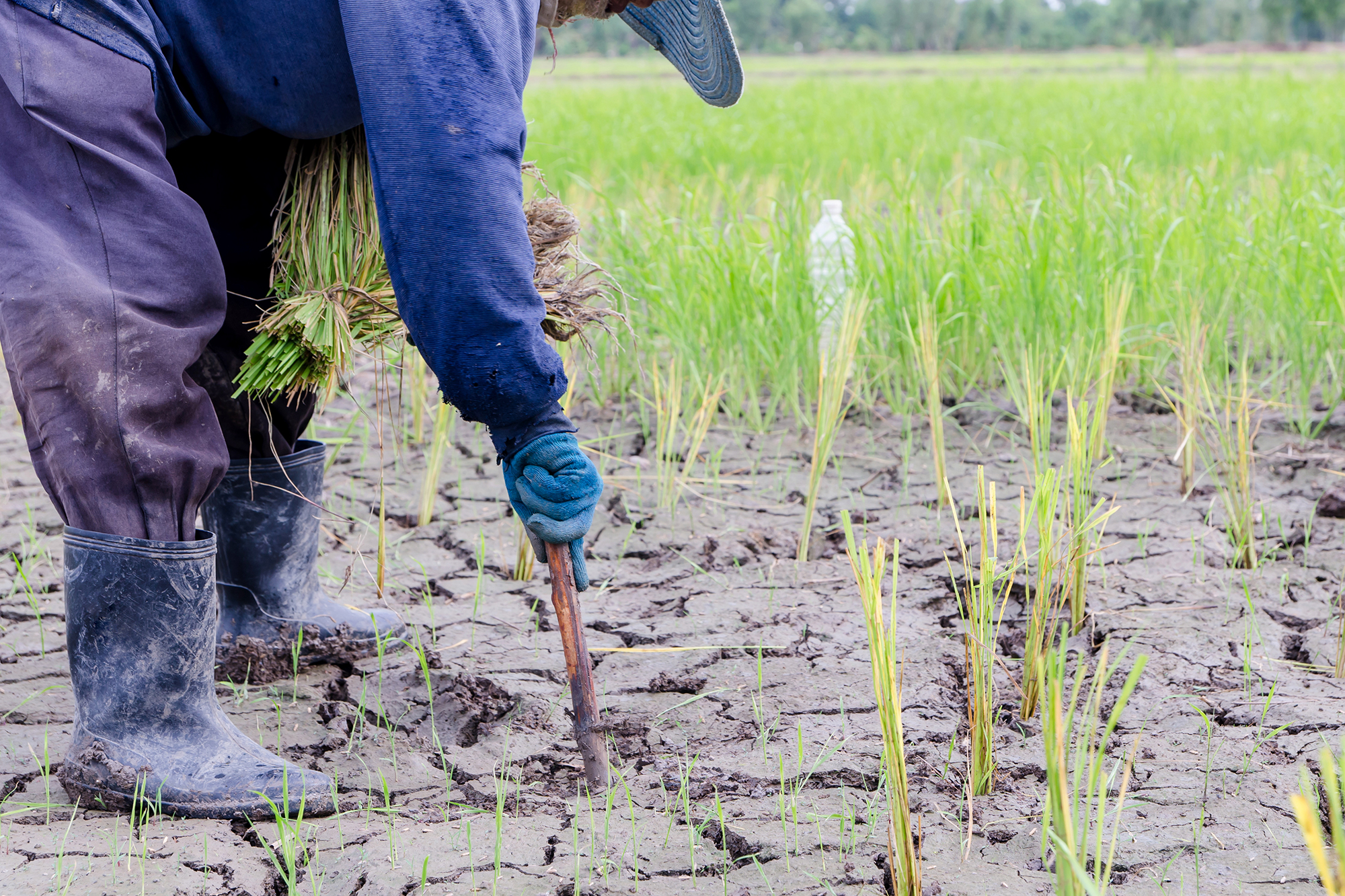Studying global changes in droughts - WCSSP case study
Flash droughts can have devastating impacts on crops and water supplies. International collaborative research has found that droughts across the world are developing more rapidly as a result of climate change.
There are many different types of droughts. Droughts occur worldwide and they can last from weeks to decades. Flash droughts are droughts that develop rapidly, sometimes in as little as a few weeks. These types of droughts are challenging to forecast in comparison to slower forming droughts.

Flash droughts can have adverse impacts on water supplies and crop yield and quality, particularly if the drought occurs during the growing season. Due to their rapid onset, communities and decision-makers often have less time to prepare for any potential impacts. In 2012, a severe flash drought in the United States resulted in economic losses of $30 billion USD, and a flash drought in Southern China in 2013 led to two million hectares of damaged crops.
Challenges of forecasting flash droughts
Early warning systems for flash droughts are currently in the early stages of development in some regions around the world. These systems are vital for decision-makers to make proactive decisions that could reduce the risks of impending drought conditions. However, forecasting flash droughts is a significant global challenge due to the complex processes that influence their rapid onset.
Flash droughts often result from a combination of low rainfall and increased temperatures, in addition to other factors such as strong winds. These factors combine to quickly reduce the amount of water in the soil. For example, higher temperatures increase the amount of evapotranspiration, which is the movement of water from the land to the atmosphere through both evaporation from the soil and transpiration from plants.
Global changes in drought type
Researchers from institutes in China, the UK and USA have been investigating how flash droughts have changed globally over the past 60 years. The research is part funded by the Climate Science for Service Partnership China (CSSP China) project, a collaborative climate science initiative between research institutes in the UK and China.
The research shows there has been a transition in drought type over many regions, with an increase in flash drought occurrence compared to slower forming droughts. When looking at the world’s 33 global regions, 74% of these have shown a transition towards flash droughts. This transition is particularly significant for regions such as North and East Asia, Sahara and Europe.
They found that globally, there has been an increase in the speed of drought onset over most regions. Several regions had more significant increases in flash drought onset speed including North and Central Asia, Australia and Europe.
“Flash drought is a new concept developed in the past 20 years. There have been rapidly growing interests from multidisciplinary research communities studying flash drought in various regions of the world from different perspectives. This recent study has looked at drought onset speed and the occurrence of flash drought globally. Global warming is speeding up drought development in many parts of the world” Peili Wu, Expert Scientist at the Met Office, the UK’s national meteorological service.
Climate change and droughts
The researchers studied how climate change is influencing the speed at which droughts occur and intensify. They found that human-induced climate change has contributed to this global transition to more frequent flash droughts in comparison to slower forming droughts.
The researchers also looked at how droughts will change in the future. They used climate models driven by both a moderate greenhouse gas emissions scenario where carbon dioxide emissions remain around current levels until the middle of the century, in addition to a scenario with very high greenhouse gas emissions. In both scenarios, future projections show a further increase in the speed of drought development in most regions and an increase in the number of flash droughts compared to slower forming droughts.
This research provides new insights into how droughts have been changing in different regions around the world and the role of human-induced climate change in driving an increase in drought onset speed. The underpinning research is fundamental to understanding the changing characteristics of droughts and to inform existing drought monitoring and warning frameworks.
“This work also alters our understanding of the future impacts of climate change which are often based on changes to droughts with slow onset speeds. The transition to flash droughts will increase risks to our food and water systems. This global change will also impact terrestrial ecosystems which will have less time to adapt to a sudden reduction in water availability” added Peili.
Sustainable development goals
Outputs from CSSP China support the UN’s Sustainable Development Goals (SDGs). Flash drought research particularly supports work towards goal 1 (no poverty), goal 2 (zero hunger) goal 13 (climate action) and goal 17 (partnerships for the goals). Find out more about how the Met Office supports the SDGs.



